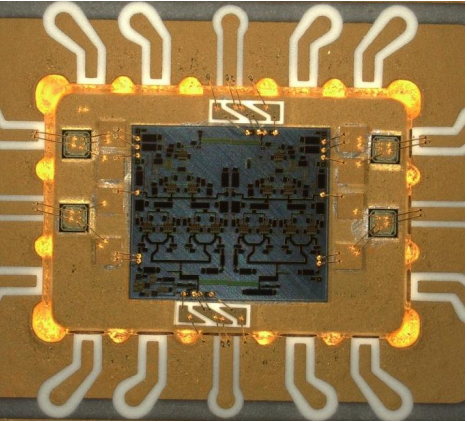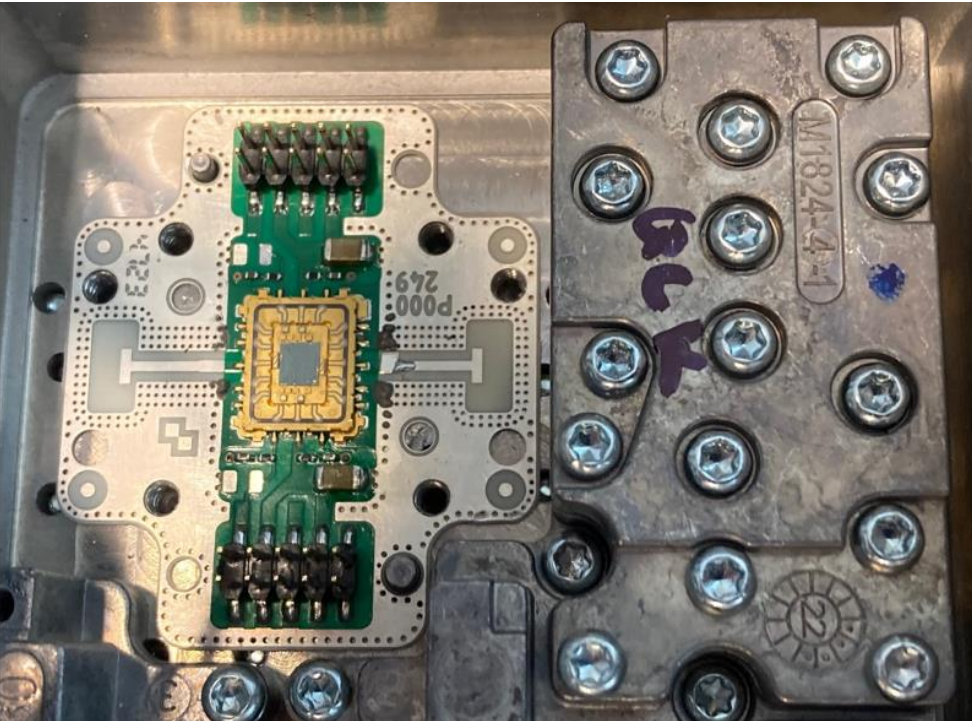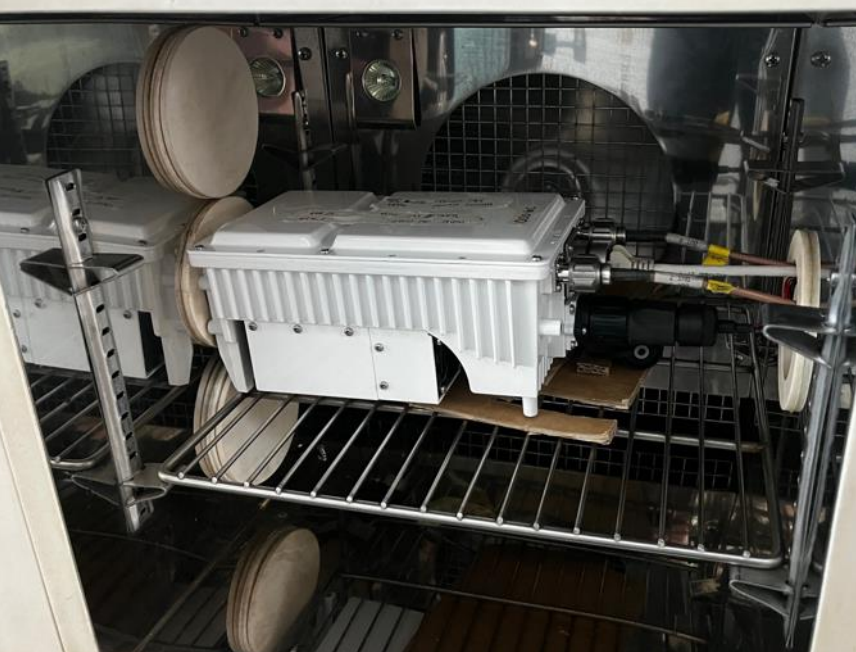-
StatusOngoing
-
Status date2025-04-01
-
Activity Code7B.062
The project objectives are as follows:
-
To determine which compound semiconductor process, from the available commercial MMIC foundries, is most suitable for the next generation of Ka-band power amplifiers. These will be used in GIL satellite ground terminals. Comparing measured and foundry data the preferred process was selected based upon simulated data in a 2.5W PA baseline design.
-
The selected process, GaN-on-Si process, D01GH was subsequently to be used in a MMIC class BJF-1 PA design. The overall amplifier performance is to be determined by simulation.
-
Three commercially available amplifiers were measured in a suitable test fixture and PCB to determine which best meets the GIL specification. Target powers were taken as 2.5W and 4W across the Ka band. From these measurements one MMIC is selected to be incorporated in a package and mounted on a dedicated transceiver board to be tested in a GIL XRJ transceiver housing and a limited lifetime test undertaken.
-
The resulting measurements were used to update the PA specification and ultimately the Business Case for next generation GIL satellite ground station transceivers.

The key technical challenges of the project were:
-
to secure foundry samples to enable an informed choice of process for the PA design exercise.
-
The design challenge was for the amplifier topology, class BJF-1, to achieve the bandwidth, power and efficiency for a viable MMIC.
-
Achieving good performance of the selected MMIC in the chosen Kyocera package, with designed alumina inserts and on a dedicated PCB in the GIL XRJ transceiver housing.
The prime management challenge was to complete the project through the disruption of the COVID pandemic and with significant personnel changes.
Global Invacom are aware of the risk associated with a single supplier which is currently used. A new MMIC sourced from within the UK, or the EU has an advantage of not being restricted by export issues associated with a single US supplier. Securing the supply chain is a key strategic need especially with the prospect of tariffs or ITAR related export controls.
In addition, a new design on the latest semiconductor GaN-on-Silicon process has the prospect of better performance in terms of efficiency and output power. The adoption of a novel class of operation for the main power amplifier, the class BJF-1, should enhance the efficiency further, resulting in lower power consumption. Having a design from a fabless design house raises the prospect of further design reviews to give GIL a commercial advantage. Although GaN is more expensive that GaAs, the improved current handling results in a smaller die making GaN more viable as a solution in the Ka Band market.
The MMIC power amplifier is intended to operate in the existing Global Invacom Limited XRJ Ka-band VSAT Transceiver housing, globalinvacom.com/products/xrj but with a more cost-effective solution with a more secure supply chain. The bandwidth of the unit would be extended to 27.5 - 31 GHz, and P1dB output power >36dBm across the whole band. Small signal gain will be 22 – 25dB and power added efficiency of the die above 25%. Output power under QPSK modulation, 1 MS/s, α=0.2 > 34dBm. Input and output return losses for the die will be better than 12dB. A reduced die size improves the cost effectiveness of moving to a GaN-on-Silicon process.


In turn, the MMIC and any adjacent components such as RF decoupling caps and matching compensation sections would be soldered into a suitable package (a Kyocera package was used in this study) and gold wires bonded between package pads, MMIC and components. Lifetime testing has shown this process solution for the MMIC to be viable for extended operation at higher temperatures, suggesting a high MTBF.
The proposed system architecture for the XRJ transceiver is to take the nominated Iconic ICP2840 die and package that in a Kyocera SGMR-A2416-B RF package. The Kyocera package is relatively inexpensive and has good thermal performance for heatsinking. There is also the space in package to accommodate decoupling chip capacitors in package that help stabilise the device and alumina tiles performing compensation matching at the RF input and RF output for the die in package. The package, die and components are then epoxied into the package and gold-wire bonded. The whole package is then mounted on a purpose designed PCB on the low loss substrate Rogers 4003C LoPro PCB and built into Global Invacom’s cutting edge Ka-band VSAT XRJ transceiver test housing which has a waveguide port to the antenna.
If the University of Sheffield MMIC design was subsequently fabricated, the packaging and PCB would be redesigned to accommodate the smaller and possibly cheaper die.
This project had 3 major milestones; these were to design a Ka-band MMIC PA suitable for the use in the XRJ transceiver. The foundry process to be used was determined by sample assessments from WIN and OMMIC foundries. In parallel, three commercially available die were sourced, mounted on test fixtures and measured for power, bandwidth, linearity and efficiency. Of these three candidates one, the Iconic ICP2840, was selected for mounting in a package and on a suitable modified PCB for testing the XRJ housing. Tests were taken of two units. The business plans were subsequently updated.
The project deliverables have been achieved with the design of a Ka Band PA MMIC with P1dB >36dBm and efficiency 25 – 31% across the band 27.5 – 31GHz on the OMMIC D01GH GaN-on-Si process. This amplifier uses the novel class BJF-1 to achieve 3% higher efficiency than a standard class AB design would yield.
In parallel, three candidate off-the-shelf MMICs were tested in fixture and against the targeted specification and the Iconic ICP2840 selected for testing in the GIL XRJ transceiver housing. Generally, performance was good and in a limited lifetime test power degraded by only 0.4dB.




